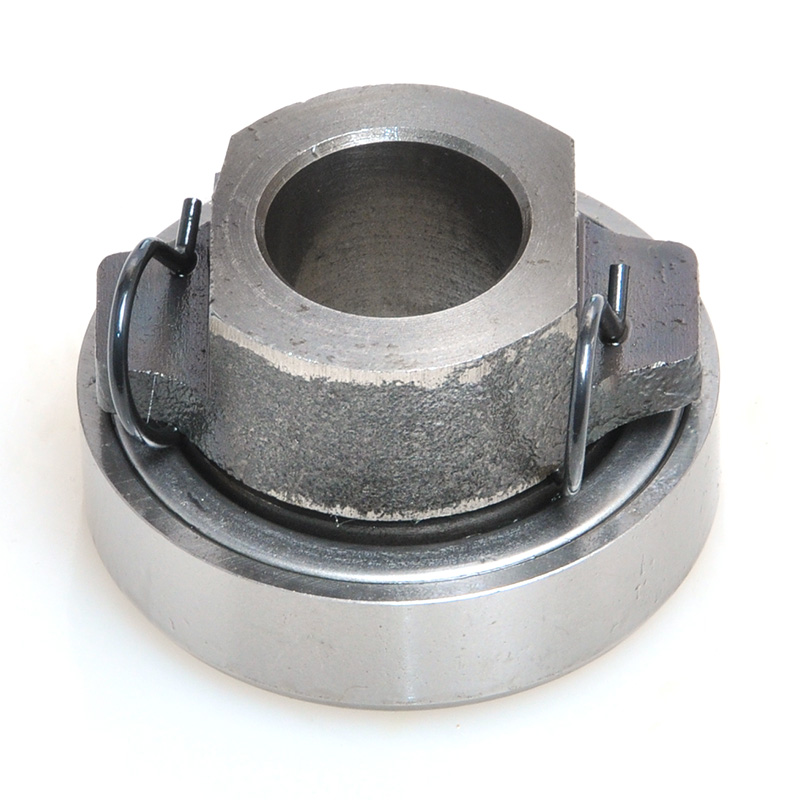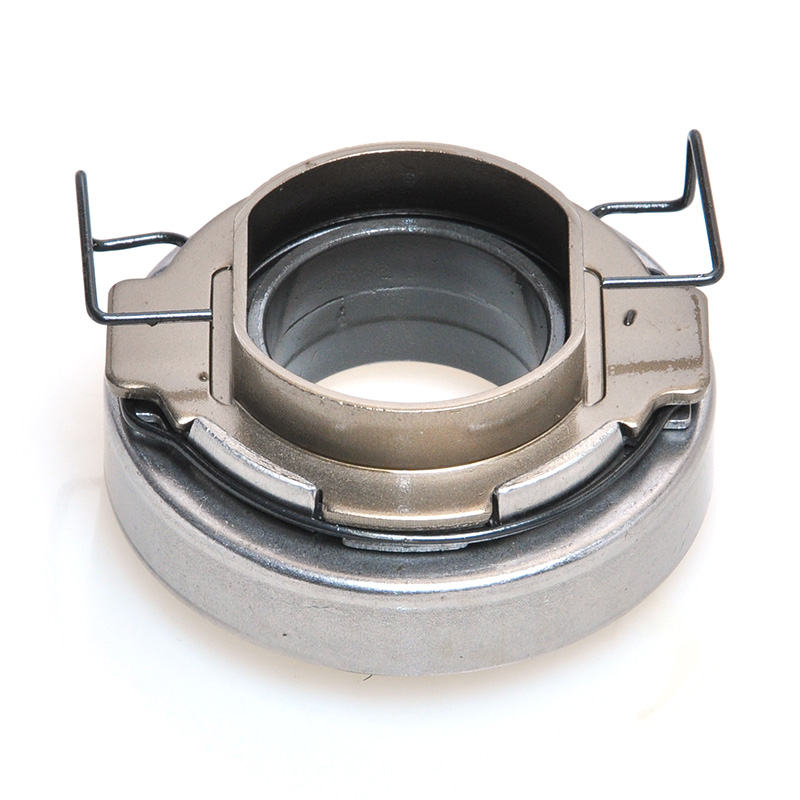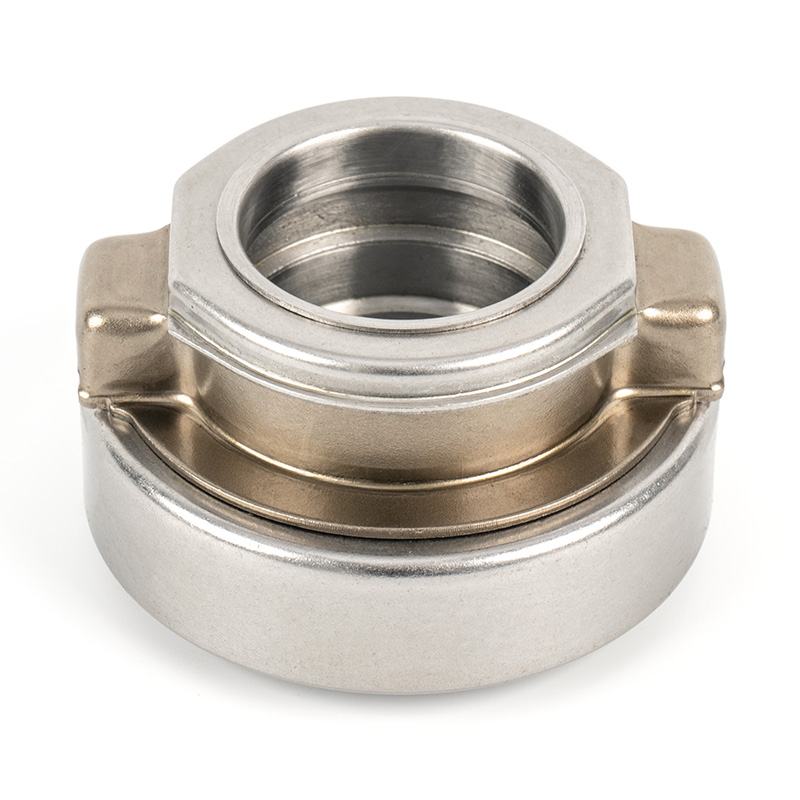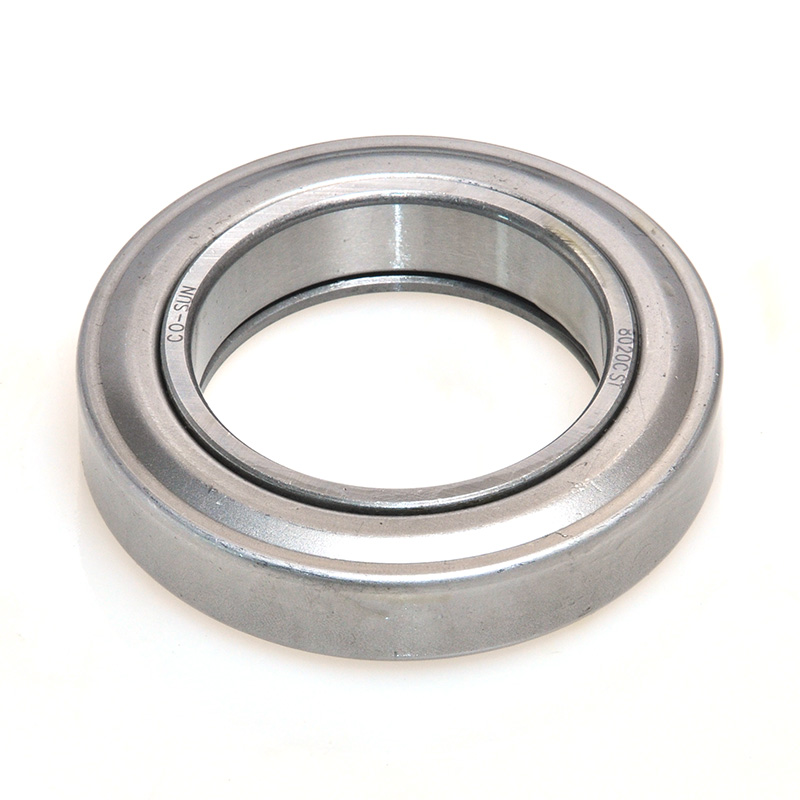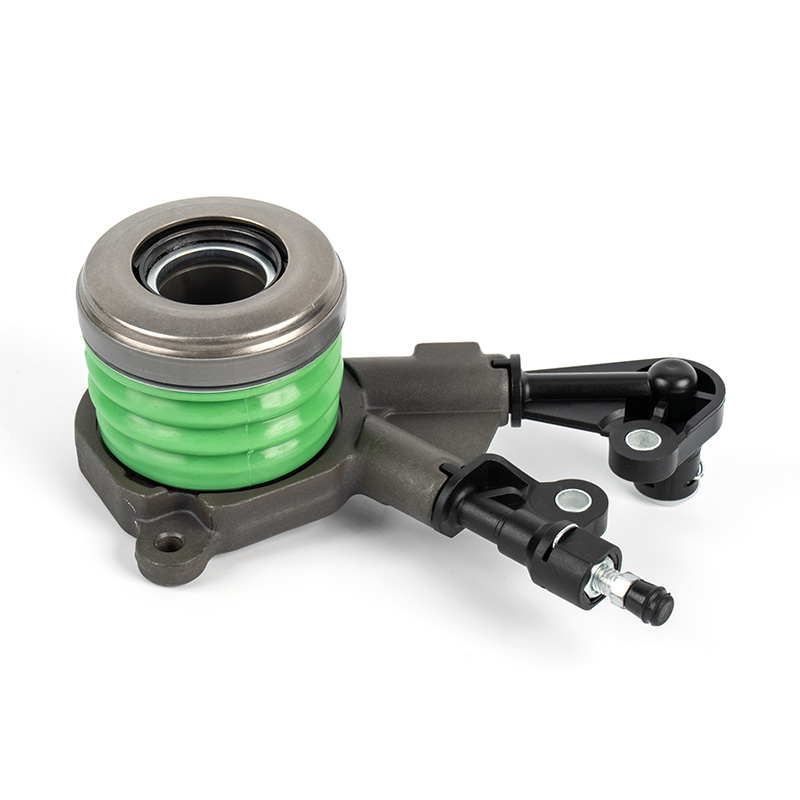What is Clutch Release Bearing?
1.What is Clutch Release Bearing?
The clutch release bearing (CRB), also termed the throw-out bearing, is a precision component within a manual transmission's clutch actuation system. It functions as the critical intermediary between the rotating clutch assembly and the stationary actuation mechanism. Its proper operation is fundamental to the vehicle's ability to disengage power from the engine to the transmission, enabling gear shifts.
2.Concept and Detailed Function
Core Concept: The CRB is a high-precision bearing, typically a deep-groove ball bearing or a angular contact bearing, engineered to withstand significant axial (thrust) loads. It is mounted on the transmission's clutch release sleeve and interfaces directly with the fingers of the diaphragm spring in a cover-type pressure plate.
Primary Function: To convert the linear input force from the clutch fork into a uniform axial force against the rotating pressure plate, thereby disengaging the clutch.
Detailed Working Principle:
Actuation: Depressing the clutch pedal activates the clutch master cylinder (hydraulic system) or pulls the cable (mechanical system). This force is transmitted to the clutch fork.
Engagement: The clutch fork pivots, pushing the CRB forward along the transmission input shaft sleeve.
Load Application: The face of the CRB contacts the inner ends of the diaphragm spring fingers on the rotating pressure plate. The bearing's outer race rotates with the pressure plate while the inner race is pushed forward by the fork.
Disengagement: The pressure applied by the bearing causes the diaphragm spring to flex, retracting the pressure plate from the clutch disc. This breaks the friction interface between the disc and the flywheel, interrupting power flow.
De-actuation: Releasing the pedal retracts the bearing, allowing the diaphragm spring to re-apply clamp load, re-engaging the clutch.
3. Application and Integration
CRBs are employed in all manual transmission vehicles, from passenger cars to commercial trucks and heavy machinery. Their design is tailored to the specific clutch system:
Push-Type Clutch: The most common design. The release bearing is pushed toward the engine to disengage the clutch.
Pull-Type Clutch: Often found in high-torque applications. The release bearing is pulled away from the engine to disengage the clutch. The bearing and fork design differ accordingly.
Concentric Slave Cylinder (CSC): A modern integrated design where the hydraulic slave cylinder and release bearing are a single unit. This eliminates the external clutch fork and pivot, simplifying packaging but requiring unit replacement upon failure.
4. In-Depth Comparison: CRB vs. Pilot Bearing/Bushing
These two bearings are often confused but serve entirely separate functions.
| Feature | Clutch Release Bearing | Pilot Bearing/Bushing |
| Location | On transmission input shaft housing. | Center of engine flywheel. |
| Primary Load | Axial (Thrust) Load. | Radial Load. |
| Function | Disengages the clutch. | Supports the tip of the transmission input shaft, maintaining alignment with the crankshaft. |
| Rotation State | Rotates only during clutch actuation. | Rotates continuously with the engine when the clutch is engaged; stationary relative to input shaft when clutch is disengaged. |
| Failure Symptoms | Noises when pedal is depressed. | Grinding noise even with clutch engaged, especially at idle; difficulty shifting into gear. |
5. Types, Designs, and Selection Criteria
Standard Mechanical Bearings: The conventional design, operated by a fork. Requires periodic greasing at the fork contact points during assembly.
Hydraulic Release Bearings (HRB) / Concentric Slave Cylinders (CSC): Integrate the hydraulic actuation piston into the bearing assembly. They are self-adjusting and reduce pedal effort but are more complex and costly.
Bearing Material: Races and balls are typically made from high-carbon chromium steel (e.g., AISI 52100) for high load capacity and wear resistance. Cages may be steel or polymer.
Seals: Critical for longevity. High-quality bearings use low-friction, high-temperature seals (often from PTFE or FKM) to retain grease and exclude contaminants.
Selection Criteria:
OEM Specification: The primary determinant. Must match the vehicle's make, model, and engine/transmission code.
Clutch System Type: Push or Pull.
Load Rating: Must exceed the axial load generated by the pressure plate's diaphragm spring.
Quality of Construction: Material quality, seal design, and manufacturing tolerances directly impact service life.
6. Lifespan and Influencing Factors
A CRB is a service-life component. Its lifespan is not fixed but is influenced by several operational factors:
Typical Service Life: Generally aligns with the service interval of the clutch disc, often between 100,000 to 160,000 km. However, premature failure is common.
Primary Influencing Factors:
Driving Habit (Most Critical): "Riding the clutch" (keeping slight pressure on the pedal) causes the bearing to spin under load continuously, generating extreme heat and rapid wear.
Operating Environment: Exposure to moisture, road salt, and abrasive dust can compromise seals and contaminate grease.
Duty Cycle: Vehicles subjected to frequent stop-and-go traffic, heavy towing, or aggressive shifting experience more actuation cycles and higher thermal stress.
Clutch System Health: A slipping clutch generates excessive heat that is transferred directly to the CRB. A worn clutch fork or pivot can apply uneven load.
7. Common Causes of Damage and Failure
Normal Wear: Gradual material fatigue from repeated load cycles.
Contamination: The primary cause of premature failure. Failed seals allow grit to enter or grease to escape, leading to abrasive wear.
Overheating: Caused by excessive slipping or constant partial engagement. High temperatures degrade the lubricating grease, leading to metal-on-metal contact and eventual bearing seizure.
Improper Installation: Incorrect bearing seating, damage during installation, forgetting to grease the contact surfaces, or misalignment of the clutch fork.
Fatigue: Spalling or pitting of the raceways due to exceeding the material's fatigue limit from high loads or shock.
8. Detailed Failure Symptoms and Identification
Auditory Symptoms:
Squealing/Chirping when the pedal is depressed: Often indicates a dry bearing or initial seal failure. Sound ceases when load is removed (pedal released).
Growling/Rumbling when depressed: Suggests advanced wear or pitting of the bearing races.
Constant Rattling: May indicate a broken bearing cage allowing elements to move freely.
Tactile Symptoms:
Clutch Pedar Vibration: A rough bearing can transmit vibrations through the hydraulic system or linkage to the pedal.
Stiff or Sticky Pedal Feel: Can be related to a binding release bearing or a failing CSC.
Functional Symptoms:
Difficulty Shifting Gears: Incomplete disengagement due to a seized bearing that cannot travel fully, causing clutch drag.
Clutch Slippage: In rare cases, if a failed bearing does not fully retract, it can apply constant light pressure to the diaphragm spring, reducing clamp load.
9. Systematic Inspection and Diagnostic Methods
Preliminary Operational Test: With the engine off, depress the clutch pedal slowly. Listen and feel for roughness, grinding, or binding. Then, with the engine running, listen for the aforementioned noises. Note if the noise changes with pedal position.
Visual Inspection (Requires Disassembly): Once the transmission is removed:
Check for visible damage: cracks, chips, or severe corrosion.
Check for lubricant leakage or the presence of caked, blackened grease indicating overheating.
Rotate the bearing by hand. It should spin freely and smoothly. Any roughness, grating, or binding confirms failure.
Check for axial and radial play. While a small amount of axial play is normal in some designs, excessive play indicates wear.
Inspection of Associated Components: Always inspect the clutch fork for wear at the contact point, check the pivot ball for wear, and examine the pressure plate fingers for wear marks from the bearing.
10. Replacement Timing, Necessity, and Procedure
Replacement Timing:
Upon confirmation of any failure symptom.
During every clutch replacement procedure. It is a false economy to reuse an old bearing.
If the transmission is removed for another reason, it is prudent to inspect and likely replace the bearing.
Necessity: A failing CRB will not self-recover. Continued use risks collateral damage to the pressure plate fingers and the clutch fork. A complete seizure can lead to the inability to disengage the clutch, stranding the vehicle.
Replacement Procedure Overview:
Vehicle is secured, and the battery is disconnected.
The transmission is detached from the engine and lowered.
The clutch fork is disengaged, and the old CRB is removed from the release sleeve.
The release sleeve and contact face of the clutch fork are cleaned and lubricated with high-temperature bearing grease.
The new bearing is pressed or slid into place carefully, avoiding impact forces.
The entire clutch system (pressure plate, disc, flywheel, bearing) is reassembled with precise alignment and torqued to specification.
For hydraulic systems (including CSCs), the system is bled of air.
Clutch function is tested before full road operation.
11. Maintenance and Proactive Prevention
The CRB requires no periodic owner maintenance. Its longevity is ensured through correct usage and proactive system care:
Driving Discipline: Avoid resting your foot on the clutch pedal. Depress the pedal fully only for gear changes and release it completely.
Prompt Attention: Address any clutch-related symptoms (slippage, odd noises) immediately to prevent secondary damage.
Quality Parts: When replacement is necessary, use high-quality components from reputable manufacturers to ensure material integrity and precise tolerances.
Professional Installation: Ensure the replacement is performed by a technician who understands the importance of cleanliness, proper lubrication, and correct torque procedures.
12. Frequently Asked Questions (FAQ)
Q: Can I just lubricate a noisy release bearing?
A: No. The bearing is a sealed unit. Noise indicates internal wear or seal failure. Lubrication is only possible for the external fork contact points during disassembly, which may temporarily quiet a minor squeak but will not address internal damage.
Q: My car makes a noise when the clutch is out (engaged), but it stops when I press the pedal. Is that the release bearing?
A: No. This is a classic symptom of a faulty transmission input shaft bearing, not the release bearing. The CRB is typically noisy when loaded (pedal depressed).
Q: Is it safe to drive with a noisy release bearing?
A: It is not recommended. While the vehicle may remain operational for a short time, the bearing's condition is unpredictable and could fail suddenly, resulting in a loss of clutch function.
Q: Why does my new clutch kit include a new release bearing?
A: Because the bearing is a wear item with a service life similar to the clutch disc. Installing a new clutch with an old, worn bearing risks premature failure of the entire new assembly.
Q: What is the difference between a clutch kit and a clutch set?
A: Terminology varies, but typically a "kit" includes the disc, pressure plate, and release bearing. A "set" may also include the pilot bearing/bushing and an alignment tool. Always verify the contents before purchase.
 +86-13867573512
+86-13867573512

